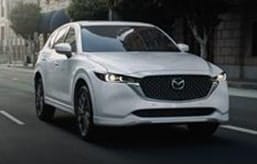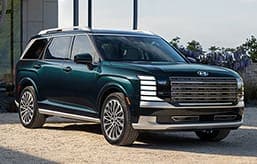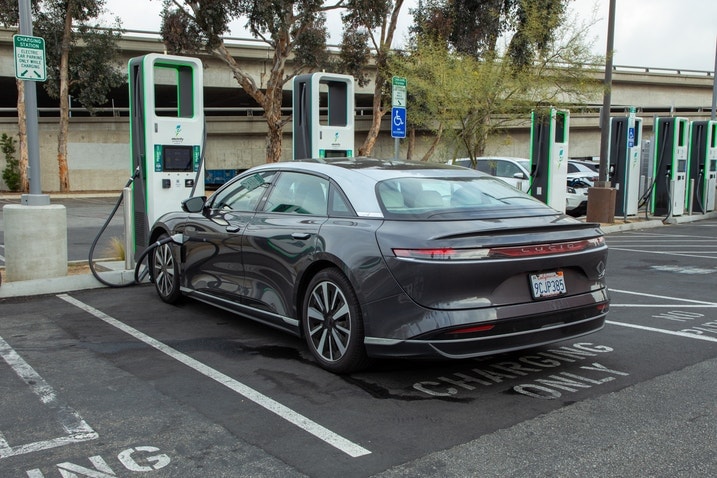- The Lucid Air Grand Touring is the most expensive car Edmunds has ever purchased for its long-term fleet.
- There's a lot to like, but we've been disappointed by some of the in-car tech and real-world electric range.
- Lucid has released dozens of over-the-air-updates in the months since we've purchased our car to improve vehicle functions.
The First 5,000 Miles of Lucid Air Ownership Have Been ... Eventful
This is the first car from a brand-new automaker, so there's bound to be teething issues
There are a lot of expectations that come when dropping $140,500 on a brand-new car. That's only compounded when you consider our 2022 Lucid Air Grand Touring is the most expensive car Edmunds has ever purchased for our long-term fleet.
We've crossed the 5,000-mile threshold with our Air, and it seemed appropriate to check in. In the months since we took possession, few cars have sparked as much discussion among the editors. It's proven eye-catching and quick on the street, but our time has been far from perfect.
Early adopters
There's a lot to like with the Air. It's extremely quick, offers the most range of any EV we've tested to date, and has a seemingly endless amount of storage for a sedan. It's spacious, too, with plenty of room for rear passengers. But the in-car tech has proved endlessly frustrating. The touchscreen is slow to respond, as are the blind-spot cameras. You've already crossed into the next lane by the time they activate. The image itself has a fairly low resolution and frame rate, so it always feels fuzzy and laggy. We like that you can create separate driver profiles to customize your ride, but switching profiles essentially reboots the infotainment system, and you can't do it while driving.
Build quality has been hit-and-miss. The interior is stylish and has open-pore wood trim on the dash and storage bin as well as soft simulated leather upholstery, but the buttons on the steering wheel feel extremely cheap. There have been some buzzes and creaks, most notably from the front pillar. We've also noticed some weather stripping peeling on the outside.
Around the holidays, one of our editors was locked out of the Lucid for a few hours. The whole tale involves calls to customer service, dead key fob batteries, cell signal maps and some lessons learned. Not too long afterward, the driver's door handle broke, though with some finagling we were able to open and close the door itself. The car has been taken in for service to solve some of the issues.
Am I Ready for an EV?
- EV ownership works best if you can charge at home (240V outlet)
- Adding a home charging system is estimated to cost $1,616 in
- Edmunds is partnering with Treehouse, an independent provider of home EV installation services. Learn more about the installation services partnership
Better range than the rest but not as good as expected
Our Lucid Air Grand Touring has an EPA-estimated range of 516 miles on a full charge. That's more range than any other EV on the market today, but it's not exactly what we've seen in the real world or on Edmunds' EV range testing route. While a Lucid Air Dream Edition Range we tested managed to drive 505 miles on a charge (still 15 miles short of its EPA rating), the best we've seen is 438 miles on a charge from our long-termer. We were a bit surprised by the result given that most cars we test on on our range loop outperform their EPA estimates. Take a look at our EV leaderboard to see what we mean.
That's not to say it's all bad. That 438-mile result is still better than any other non-Lucid EV we've ever tested. And at 300 kW, the Lucid boasts one of the highest peak charging rates of any EV available. That means it can take advantage of the most powerful DC fast chargers on the market, which top out at rates of 350 kW. Combine that with two years of unlimited fast charging at Electrify America stations (and newly available paid charging at certain locations of the arguably more reliable Tesla Supercharger network) and you have one of the better EVs around for road-trip duty. Using an EA station in the Lucid is literally as simple as pulling up and plugging in. No swiping your card or messing with apps.
Updates, updates, updates
Since we took possession of the Air last year, we've received more than 30 over-the-air updates. These updates have tweaked the functions of various vehicle systems, though details on what exactly changed between versions isn't always clear. For example, update 2.0.50 simply said, "With this update, we're improving the operation of your vehicle's doors" without actually detailing the alterations. Another simply said, "With this update, we're delivering improvements to your vehicle's headlights."
Over-the-air updates were pioneered by Tesla and are transmitted wirelessly, so there's no need to go to a dealership or service center. Even some recalls can be addressed with OTA updates. OTA updates are a good thing, though the sheer number of updates in such a short amount of time has surprised us.
Not all of the updates have been clouded in vague language. Some of the most recent enhancements include version 2.0.15, which constituted a major change to the infotainment system and user interface (though it's still somewhat slow to respond to inputs); version 2.0.18, which added more features to the suite of driver aids; and version 2.0.52, which allows for scheduled charging, more accurate range estimates and more. When available, the updates are easy to install from either the smartphone app or the car itself. That said, we have had a few issues with the updates not always being available for download even after receiving a notification that it was.
These updates haven't always been perfect. For example, version 2.0.33 added SiriusXM streaming, but the feature stopped working almost immediately after the install. This isn't SiriusXM satellite radio but the company's streaming service, now integrated directly into the infotainment system. The app relies on a cell signal, not a satellite signal as with the SiriusXM radio most people are familiar with. That means a less reliable signal, and there seems to be teething issues with transmitting data to a moving target.
Edmunds says
The first 5,000 miles have been illuminating. We'll continue to tally the updates, report on range and see how the car holds up as the miles rack up. Will range improve? How will some of our build quality concerns play out? What other features does Lucid have planned with OTA updates? With just 5,000 miles on the odometer, our long-term test is only beginning.





 by
by